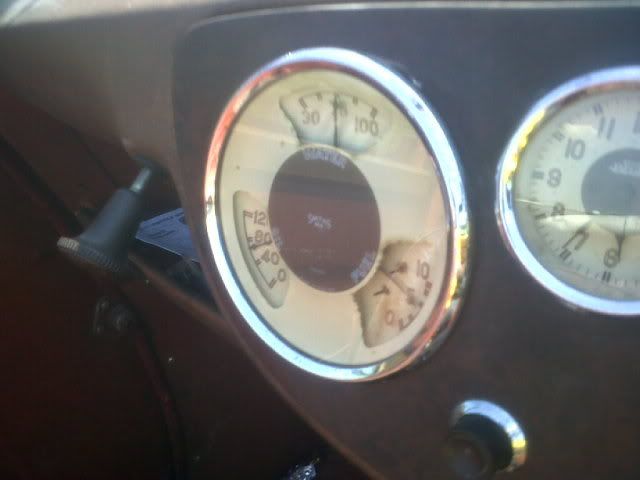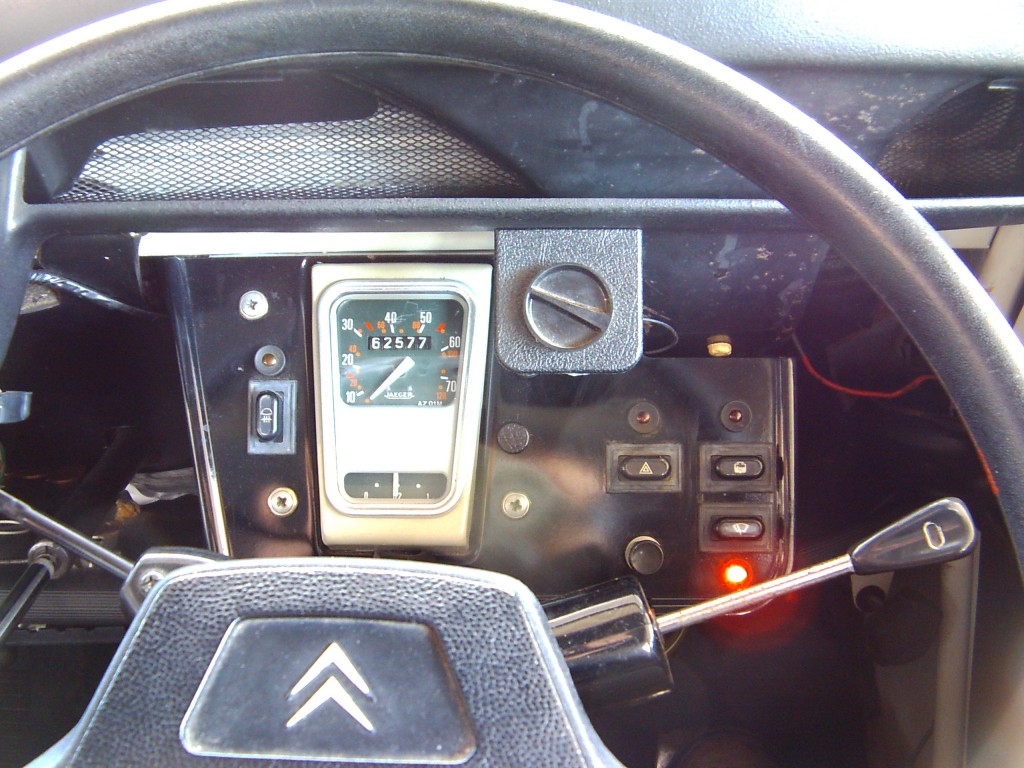It’s funny to look back and see how your tastes have changed over the years. Often such glances in the rear-view mirror of life are cause for major embarrassment- the period in secondary school when I thought a tartan waistcoat was the perfect addition to the uniform springs to mind- but others just make you go “hmmmm..”.
My taste in cars has always been same (i.e. preferably orange on the outside, velour on the inside and with some odd form of suspension) but there are some detail preferences that have shifted. Like stickers. My first car was a Series III Land Rover, which was notable for not being orange, not having a velour interior and having suspension so conventional that it predates the invention of the internal combustion engine. At the time I thought that it would cheer up following motorists if I scattered s stickers on the back door. Things like ‘You Can Go Fast- I Can Go Anywhere’, ‘Jeep Recovery Vehicle’ and ‘Lethal Weapon Series III’. Hur Hur Hur. It’s all very well to have semi-humorous stickers proclaiming your car’s off-road prowess but you have to make sure that you never do anything stupid like getting stuck on a flat, damp bit of mud through making basic off-road driving errors:
Like this.
Needless to say the stickers went quite soon after this event and did not make a reappearance. A more recent change in my tastes regards the dashboard.
I used to work on the basis that more gauges made a car better. This is a phenomenon well known to manufacturers- giving a car more things that it usually only has two of (headlights, gauges, paint colours) is an easy way to make a sporty version of an otherwise boring and everyday model. The ‘sports dial pack’ is a well-established feature of many an accessories brochure and if that still wasn’t enough for you you could buy a dozen different Smiths 2-inch gauges measuring everything from oil temperature to fuel economy. The ideal look for a dashboard was something approaching the Flight Engineer’s panel of Concorde.
 N1%, check…Fuel pumps, check…AC generators, check…Gas Mark 5 for 30 minutes…
N1%, check…Fuel pumps, check…AC generators, check…Gas Mark 5 for 30 minutes…
There is, of course, a sound reason behind this. On more mundane transport it would be the slight reluctance of the oil pressure gauge to reach its proper place was how you knew that your Morris 8 needed it’s main bearings re-shelling for the second time that year. At the other extreme sports cars need lots of gauges because in the good old days they went wrong all the time. When you’re trying to wring every struggling horse out of your supercharged Austin Seven a slight flicker of a needle may give you crucial seconds of warning that it was about to expire. It follows that having a row of gauges implied that your Ford Cortina GXL had so much performance that it needed careful, constant surveillance.
Now we come to problem with all this. It’s all well and good being able to monitor every facet of your engine’s internals when you’re powering down the Mulsanne Straight at 2am, but it’s quite another thing when the engine is question is an A-Series under the bonnet of a Mini trundling to shops. All the more so when that Mini is a much-loved classic that racks up 200 miles a year going to the local shows at a steady 40 MPH. In that situation it’s a two-edged sword. When all the gauges say what you think they should say, they present you with a reassuring picture of mechanical perfection:

Symmetry means all is right with the world.
However it only takes one needle to step out of line and terrible thoughts fill your head “My water temperature gauge used to always rest a little to the left of vertical. Now it’s vertical!!! Is the head gasket going?” or “I’m sure that oil pressure gauge is starting to move a little later than it used to? I’d better start budgeting for an engine rebuild.” This would be understandable if the gauges never lied but, don’t forget, we’re talking about old cars here, and old British Leyland cars in particular. This means they have Smiths gauge powered by Lucas electrics and that is never an infallible combination. If a gauge that has never done anything than dutifully point in the middle of its scale starts acting up, it’s more likely that some scotch-locked gizmo behind the dashboard has given up rather than any imminent engine death.
Ignorance really is bliss. It’s not as if older cars cocoon the driver away from the rotating parts. Any problems will make odd sounds, smells and stains given half a chance, often long before the gauge gets upset. Given the general inaccuracy of many gauge designs (Land Rover temperature gauges spring to mind, which, despite apparently having a scale, seem to only be able to say if the engine is cold, not that cold or piston-melting hot and are no more specific than that) it’s just as likely that the engine can be merrily boiling all its fluids whilst your Smiths ‘engine condition meter’ Duplex gauge is defiantly telling you all is well like some automotive equivalent of the Iraqi Information Minister circa 2003.
After many fretful journeys spoiled by a readout a few degrees off what it should be that led to nothing and an equal number of journeys ruined by ‘unforseen stoppages’ that none of the instruments managed to predict I have finally realised that Ignorance really is Bliss where dashboards are concerned. The car that convinced me was the Citroen 2CV, which doesn’t really have a dashboard as such. Instead it seems to have the instrument pack from a Honda 50 moped mounted on a random bit of tinplate.
And this is a relatively complex interior as 2CVs go.
For pesky legal reasons you need a speedo. You also get a fuel gauge, but that’s a sop to modern demands because the original 2CV did without one. That is it. You don’t get a temperature gauge, an oil pressure gauge, an ammeter, a vacuum gauge or anything else. You don’t even get a charge warning light- you can tell if the battery is charging because the windscreen wipers speed up. What you get is a single oil pressure light. Given that the engine is lubricated and largely cooled by oil and has only three major moving parts you know that if the light is off everything’s OK and if it comes on then you’re pretty much screwed.
And that is how it should be. Relaxing.

